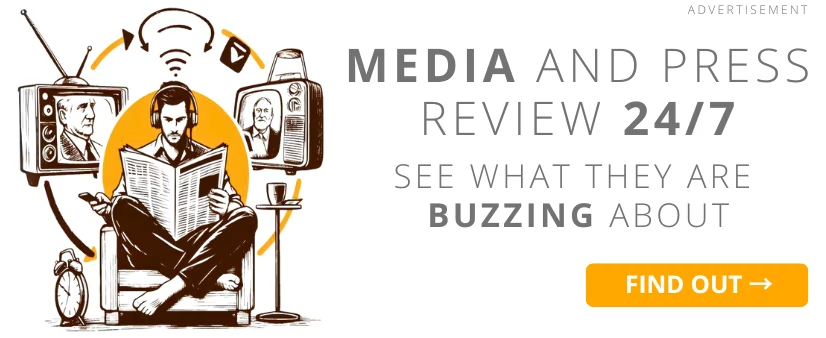 illustration: DALL-E
illustration: DALL-EYouTube has introduced a major update to its analytics system, shifting away from the long-used “returning viewers” metric. Instead, the platform now categorizes audiences into three distinct types, providing creators and brands with a more nuanced understanding of their community. The change, rolled out in YouTube Studio, aims to spotlight viewer loyalty and long-term engagement over fleeting success or raw view counts.
According to YouTube’s new model, viewers now fall into three categories:
- New viewers: Those visiting a channel for the first time during a selected period.
- Casual viewers: People who have watched content from a channel irregularly over the past year - between one and five months.
- Regular viewers: The most valuable group, made up of those who have watched content from the channel for at least six of the past 12 months.
This reclassification marks a strategic pivot toward understanding not just how many people a video reaches, but who keeps coming back. Brands, advertisers, and creators can now assess a channel’s true community impact, instead of relying on subscription numbers or one-off viral spikes.
Loyalty, not virality
In the words of Borys Marushchak, Performance Manager at Harbingers, the change allows marketers to “precisely assess audience loyalty” and differentiate between genuine community-building and short-term reach. For companies looking to partner with creators, the share of regular viewers may now matter more than subscriber counts.
See video: 7 facts about news on social media
To support creators in building viewer loyalty, YouTube has updated its platform recommendations. The new suggestions include:
- Maintaining a consistent upload schedule
- Using the Community tab for informal posts and polls
- Actively engaging with comments
- Hosting livestreams and video premieres
These practices aim to turn casual or new viewers into regulars. A signal not just of creator success, but also of sustainable channel growth. Example: A cooking channel with 100,000 subscribers but only 3% regular viewers may be less attractive to brands than a niche channel with 20,000 subscribers and 25% regular engagement. The latter suggests a tightly-knit audience that values the creator’s content long-term.
| Viewer Type | Frequency of Visits (12 months) | Engagement Value |
|---|---|---|
| New viewers | First-time visits | Discovery |
| Casual viewers | 1-5 months | Moderate |
| Regular viewers | 6+ months | High |
This detailed breakdown enables more informed content strategy decisions. Creators can now track whether their videos fail to convert first-time viewers into loyal followers - and adjust accordingly.
Before the update, the single "returning viewers" metric grouped casual and loyal users together. Now, the distinction reveals whether a channel’s success relies on novelty or lasting impact.
Social video dominates news and trust
The move also reflects broader industry shifts. According to the Reuters Digital News Report 2025, 30% of internet users identify YouTube as their primary news source. Social video consumption has soared, growing from 52% in 2020 to 65% in 2025.
- 52% → 65%: global increase in social video news consumption
- 55% → 72%: Americans watching news videos weekly
- 61%: viewers prefer platforms like YouTube over traditional news sites
- 67% → 75%: global growth in any kind of video news viewing
These numbers show why platforms like YouTube want better tools to measure true influence. Brands investing in creator partnerships care less about viral hits and more about stable audiences.
After all, according to a trust study by IBRiS, YouTube is also the most trusted social platform in Poland. Nearly 25% of respondents declared trust in the platform, and only 3% said they didn’t know it. Meanwhile, 41.6% of global users still judge content credibility by popularity - likes and views - a concerning insight from UNESCO`s Influencer 2024 Report.
This behavior emphasizes why metrics like regular viewer share are so important. They reflect real relationships between creator and audience, not just algorithm-fueled attention.
In the new YouTube ecosystem, engagement is currency. Viewers who return month after month now speak louder than subscriber milestones or trending appearances.
COMMERCIAL BREAK
New articles in section Media industry
Journalism in the age of AI. Why people prefer humans over machines
Krzysztof Fiedorek
Only 12% of people accept news created solely by AI, while 62% prefer those written by humans. At the same time, only 19% notice labels indicating the use of artificial intelligence, while younger audiences ask AI to explain the content to them. These are the findings of the Reuters Institute report on artificial intelligence in media.
Why do we believe fakes? Science reveals the psychology of virals
KFi
Why do emotions grab more attention than evidence, and why can a fake authority overshadow scientific data? Researchers from Warsaw University of Technology, Jagiellonian University, and SWPS University in Poland sought the answers. Here are their findings.
Investigative journalism in Europe. Newsrooms face pressure
KFi, Newseria
Media and political representatives point to the difficult situation of investigative journalism in Europe. Newsrooms are reluctant to invest in this segment due to high costs and the large amount of time and effort required. Most of all, however, they fear legal proceedings.
See articles on a similar topic:
Cyberviolence and hate disguised as a joke. The RAYUELA report on youth
Krzysztof Fiedorek
The study conducted in five countries reveals a harsh truth. Online violence is not evenly distributed. It is a digital map of prejudice that hurts the most those who stand out the most. "It’s just a joke." That’s how violence often begins. Young people go through it in silence.
E-commerce Forecasts in Poland. Trends for 2024 and Beyond
Krzysztof Fiedorek
In 2024, e-commerce in Poland is reaching new heights, with an increasing number of consumers regularly shopping online. The report "E-shopping Habits of Poles 2024," prepared by SAMOSEO analysts, analyzes current trends and forecasts the industry's near future.
Repression Against Media: Committee to Protect Journalists Report for 2024
Krzysztof Fiedorek
In 2024, at least 361 journalists worldwide were imprisoned, often for exposing the truth. In China, reporters are tracked using advanced facial recognition systems, in Israel, Palestinian journalists are jailed without trial, and in Myanmar, journalist Shin Daewe received a life sentence for... a drone.
We Trust AI-Generated Fake News More Than Human-Created News
KrzysztoF
Generating and spreading misinformation with AI can negatively affect various areas of life, including global healthcare. To examine how AI-created text impacts the comprehension of information, researchers from the University of Zurich analyzed tweets generated by GPT-3.





























